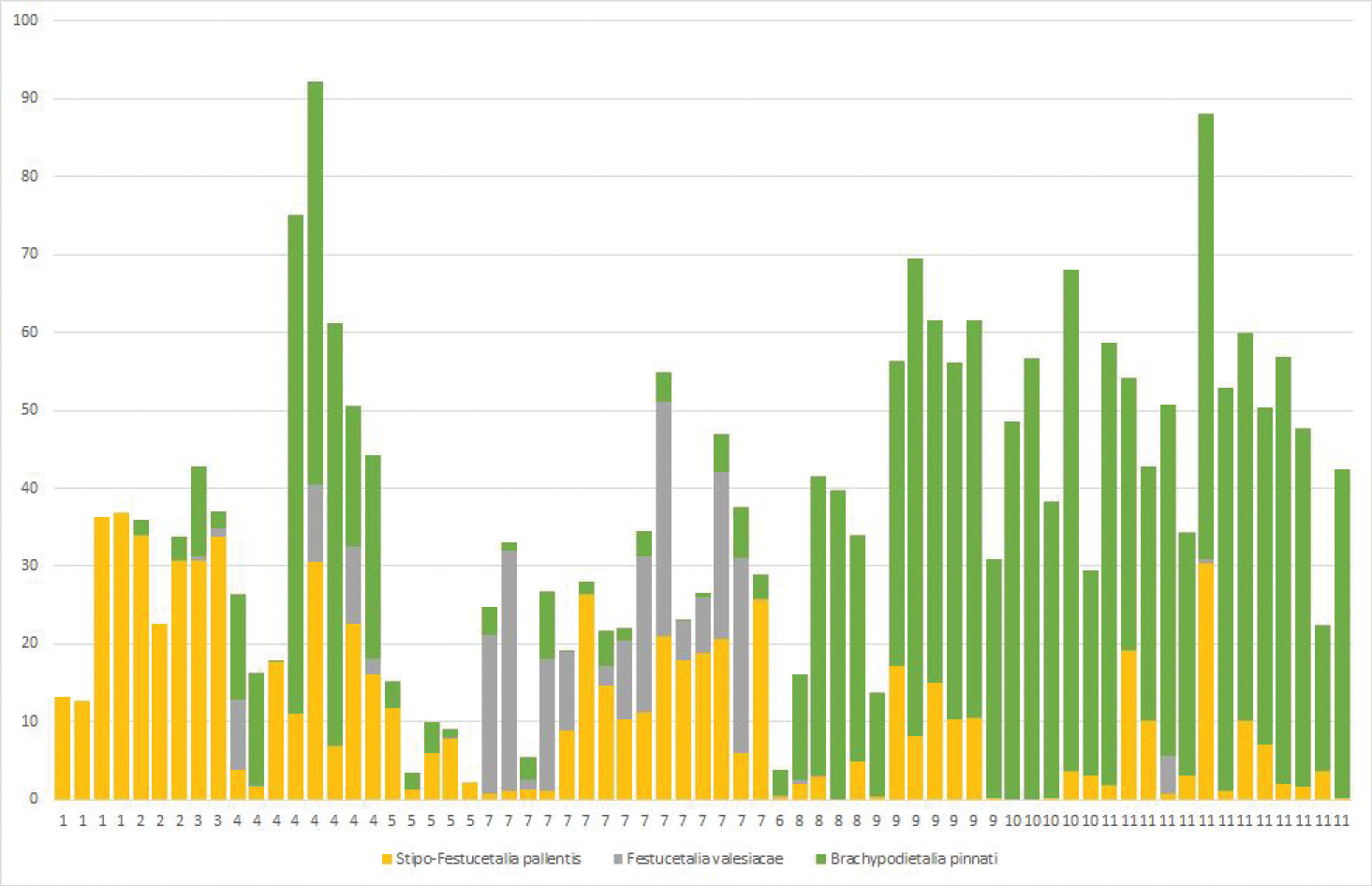
|
||
|
Stacked total percentage covers of the diagnostic species of the orders Stipo-Festucetalia pallentis (A), Festucetalia valesiacae (B) and Brachypodietalia pinnati (C) in each relevé. The numbers below the diagram are the TWINSPAN clusters. The sequence of the relevés is the same as in Figure 3 but differs from Table 1 in the position of cluster 4. Note that the percentage cover of non-diagnostic species is not shown. |